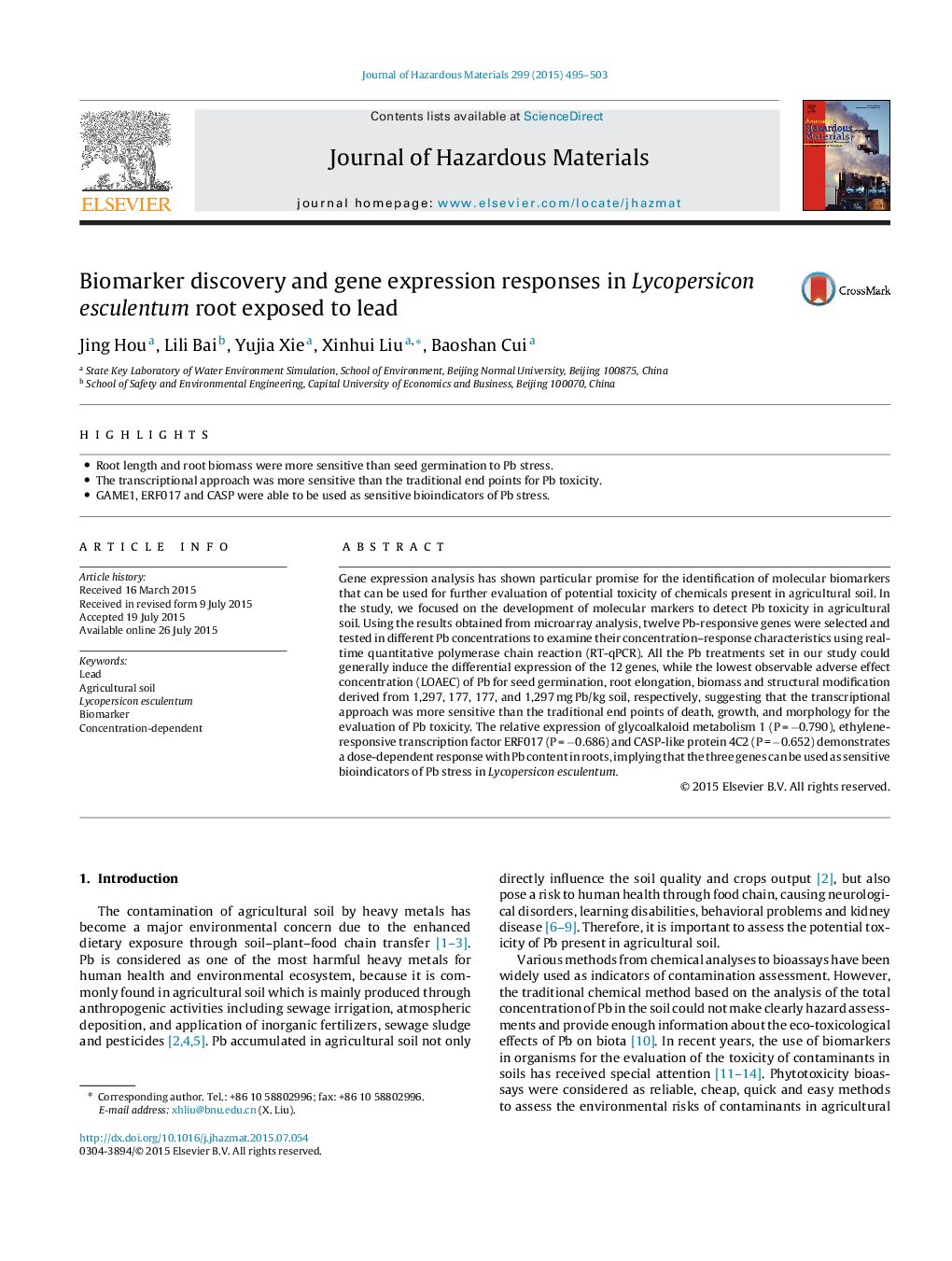| Article ID | Journal | Published Year | Pages | File Type |
|---|---|---|---|---|
| 575949 | Journal of Hazardous Materials | 2015 | 9 Pages |
Abstract
Gene expression analysis has shown particular promise for the identification of molecular biomarkers that can be used for further evaluation of potential toxicity of chemicals present in agricultural soil. In the study, we focused on the development of molecular markers to detect Pb toxicity in agricultural soil. Using the results obtained from microarray analysis, twelve Pb-responsive genes were selected and tested in different Pb concentrations to examine their concentration-response characteristics using real-time quantitative polymerase chain reaction (RT-qPCR). All the Pb treatments set in our study could generally induce the differential expression of the 12 genes, while the lowest observable adverse effect concentration (LOAEC) of Pb for seed germination, root elongation, biomass and structural modification derived from 1,297, 177, 177, and 1,297 mg Pb/kg soil, respectively, suggesting that the transcriptional approach was more sensitive than the traditional end points of death, growth, and morphology for the evaluation of Pb toxicity. The relative expression of glycoalkaloid metabolism 1 (P = â0.790), ethylene-responsive transcription factor ERF017 (P = â0.686) and CASP-like protein 4C2 (P = â0.652) demonstrates a dose-dependent response with Pb content in roots, implying that the three genes can be used as sensitive bioindicators of Pb stress in Lycopersicon esculentum.
Related Topics
Physical Sciences and Engineering
Chemical Engineering
Chemical Health and Safety
Authors
Jing Hou, Lili Bai, Yujia Xie, Xinhui Liu, Baoshan Cui,
